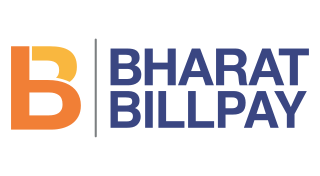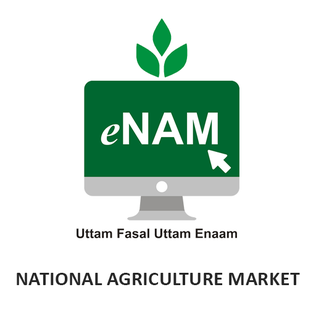A payment system is any system used to settle financial transactions through the transfer of monetary value. This includes the institutions, payment instruments such as payment cards, people, rules, procedures, standards, and technologies that make its exchange possible. A payment system is an operational network which links bank accounts and provides for monetary exchange using bank deposits. Some payment systems also include credit mechanisms, which are essentially a different aspect of payment.

National Financial Switch (NFS) is the largest network of shared automated teller machines (ATMs) in India. It was designed, developed and deployed by the Institute for Development and Research in Banking Technology (IDRBT) in 2004, with the goal of inter-connecting the ATMs in the country and facilitating convenience banking. It is run by the National Payments Corporation of India (NPCI). As on 31st January’ 22, there were 1,203 members that includes 111 Direct, 1,045 Sub members, 43 RRBs and 4 WLAOs using NFS network connected to more than 2.55 Lac ATM (including cash deposit machines/recyclers).
Payment and settlement systems are used for financial transactions in India. Covered by the Payment and Settlement Systems Act of 2007, legislated in December 2007, they are regulated by the Reserve Bank of India (RBI) and the Board for Regulation and Supervision of Payment and Settlement Systems.
National Electronic Funds Transfer (NEFT) is an electronic funds transfer system maintained by the Reserve Bank of India (RBI). Started in November 2005, the setup was established and maintained by Institute for Development and Research in Banking Technology. NEFT enables bank customers in India to transfer funds between any two NEFT-enabled bank accounts on a one-to-one basis. It is done via electronic messages.
The Indian Financial System Code is an alphanumeric code that facilitates electronic funds transfer in India. A code uniquely identifies each bank branch participating in the three main Payment and settlement systems in India: the National Electronic Funds Transfer (NEFT), Real Time Gross Settlement (RTGS) and Immediate Payment Service (IMPS) systems.
The National Payments Corporation of India (NPCI) is an organization that operates retail payments and settlement systems in India. The organization is an initiative of the Reserve Bank of India (RBI) and the Indian Banks' Association (IBA) under the provisions of the Payment and Settlement Systems Act, 2007, for creating a robust payment and settlement infrastructure in India.
RuPay is an Indian multinational financial services and payment service system, conceived and launched by the National Payments Corporation of India (NPCI) in 2012. It was created to fulfil the Reserve Bank of India's (RBI) vision of establishing a domestic, open and multilateral system of payments. RuPay facilitates electronic payment at all Indian banks and financial institutions. NPCI maintains ties with Discover Financial and JCB to enable the RuPay Card scheme to gain international acceptance.
Mobile payments is a mode of payment using mobile phones. Instead of using methods like cash, cheque, and credit card, a customer can use a mobile phone to transfer money or to pay for goods and services. A customer can transfer money or pay for goods and services by sending an SMS, using a Java application over GPRS, a WAP service, over IVR or other mobile communication technologies. In India, this service is bank-led. Customers wishing to avail themselves of this service will have to register with banks which provide this service. Currently, this service is being offered by several major banks and is expected to grow further. Mobile Payment Forum of India (MPFI) is the umbrella organisation which is responsible for deploying mobile payments in India.

Bharat Bill Payment System (BBPS) is an integrated bill payment system in India offering interoperable and accessible bill payment service to customers through a network of agents of registered members as Agent Institutions (AI), enabling multiple payment modes, and providing instant confirmation of payment.

India Post Payments Bank, abbreviated as IPPB, is a division of India Post that is under the ownership of the Department of Post, a department under the Ministry of Communications of the Government of India. Opened in 2018, as of January 2024, the bank has more than 8 crore customers.

Unified Payments Interface, commonly referred to as UPI, is an Indian instant payment system as well as protocol developed by the National Payments Corporation of India (NPCI) in 2016. The interface facilitates inter-bank peer-to-peer (P2P) and person-to-merchant (P2M) transactions. It is used on mobile devices to instantly transfer funds between two bank accounts. The mobile number of the device is required to be registered with the bank. The UPI ID of the recipient can be used to transfer money. It runs as an open source application programming interface (API) on top of the Immediate Payment Service (IMPS), and is regulated by the Reserve Bank of India (RBI). Indian Banks started making their UPI-enabled apps available on Google Play on 25 August 2016.

National Agriculture Market or eNAM is an online trading platform for agricultural commodities in India. The market facilitates farmers, traders and buyers with online trading in commodities.
BHIM is an Indian mobile payment app developed by the National Payments Corporation of India (NPCI), based on the Unified Payments Interface (UPI). Launched on 30 December 2016, it is intended to facilitate e-payments directly through banks and encourage cashless transactions.
The National Unified USSD Platform (NUUP), also known as the *99# service, is a platform that provides access to the Unified Payment Interface (UPI) service over the USSD protocol. Initiated by the Government of India and developed by the National Payments Corporation of India (NPCI), it facilitates access to banking services from mobile phones.
PhonePe is an Indian digital payments and financial services company headquartered in Bengaluru, Karnataka, India. PhonePe was founded in December 2015, by Sameer Nigam, Rahul Chari and Burzin Engineer. The PhonePe app, based on the Unified Payments Interface (UPI), went live in August 2016.
Paytm Payments Bank (PPBL) is an Indian payments bank, founded in 2017 and headquartered in Noida. In the same year, it received the license to run a payments bank from the Reserve Bank of India and was launched in November 2017. In 2021, the bank received a scheduled bank status from the RBI.

BharatQR, developed by NPCI, Mastercard, and Visa, is an integrated payment system in India for mobile device. The system was launched in September 2016. It facilitates users to transfer their money from one source to another. The money transferred through BharatQR is received directly in the user's linked bank account. It provides a common interface between RuPay, Mastercard, Visa and American Express, and is interoperable with all the banks. Currently, BharatQR is supported on both Android and iOS devices.
National Automated Clearing House, introduced by National Payments Corporation of India, is a centralised clearing service that aims at providing interbank high volume, low value transactions that are repetitive and periodic in nature. Offering credit and debit service to corporates, banks, and financial institutions, the service, aimed at integrating all regional ECS into one National Payment System, is claimed to be better than its predecessor, Electronic Clearing Service.

The Digital Rupee (e₹) or eINR or E-Rupee is a tokenised digital version of the Indian Rupee, issued by the Reserve Bank of India (RBI) as a central bank digital currency (CBDC). The Digital Rupee was proposed in January 2017 and launched on 1 December 2022. Digital Rupee is using blockchain distributed-ledger technology.
Sarvatra Technologies Private Limited is an Indian fintech company, headquartered in Pune, Maharashtra, that develops banking software and provides PaaS, SaaS, and cloud computing solutions to cooperative, private, and public sector banks in India.







